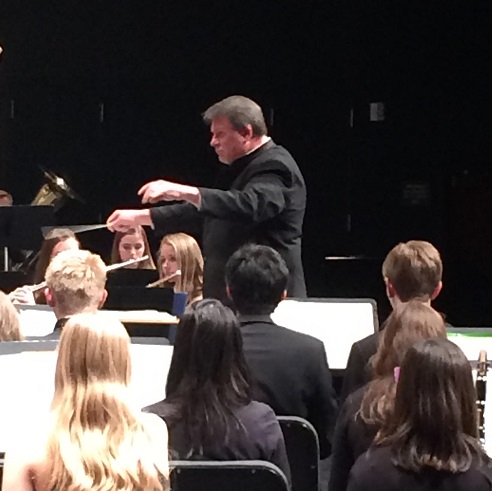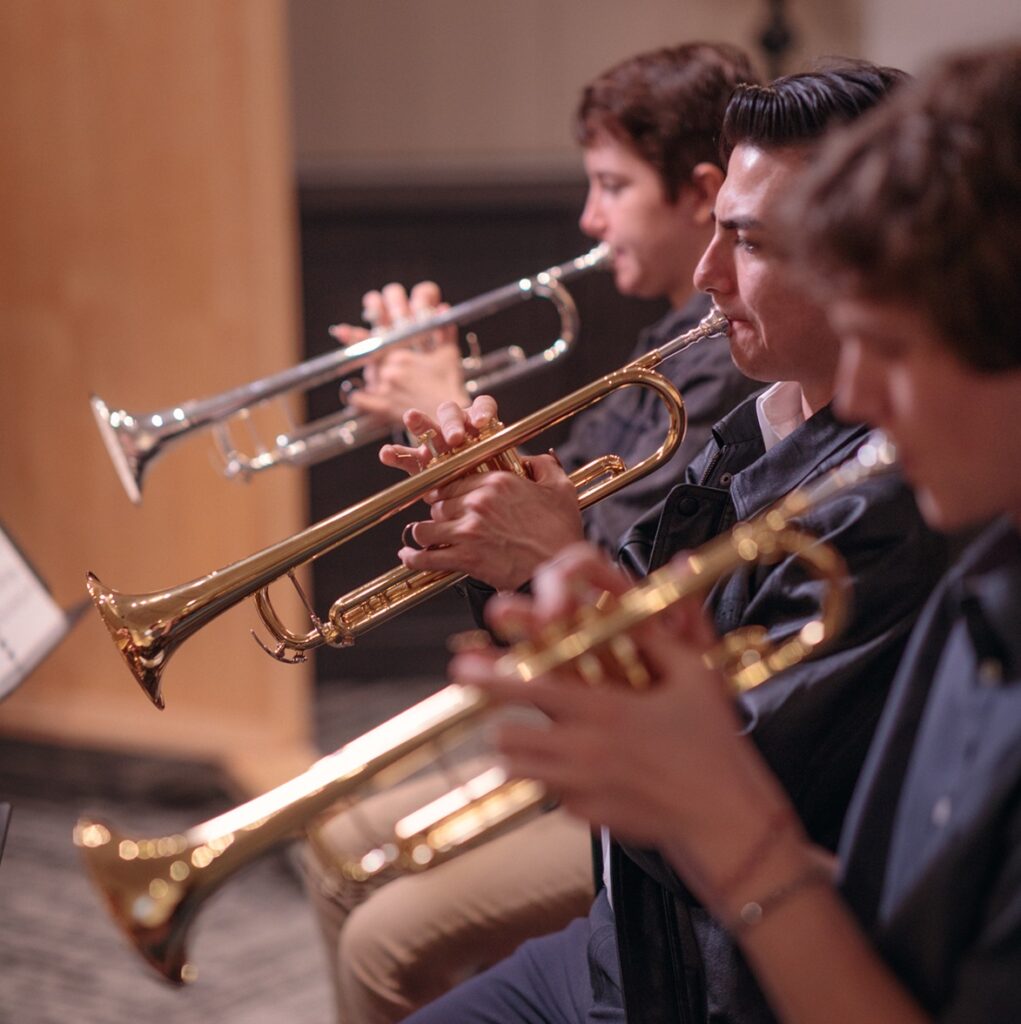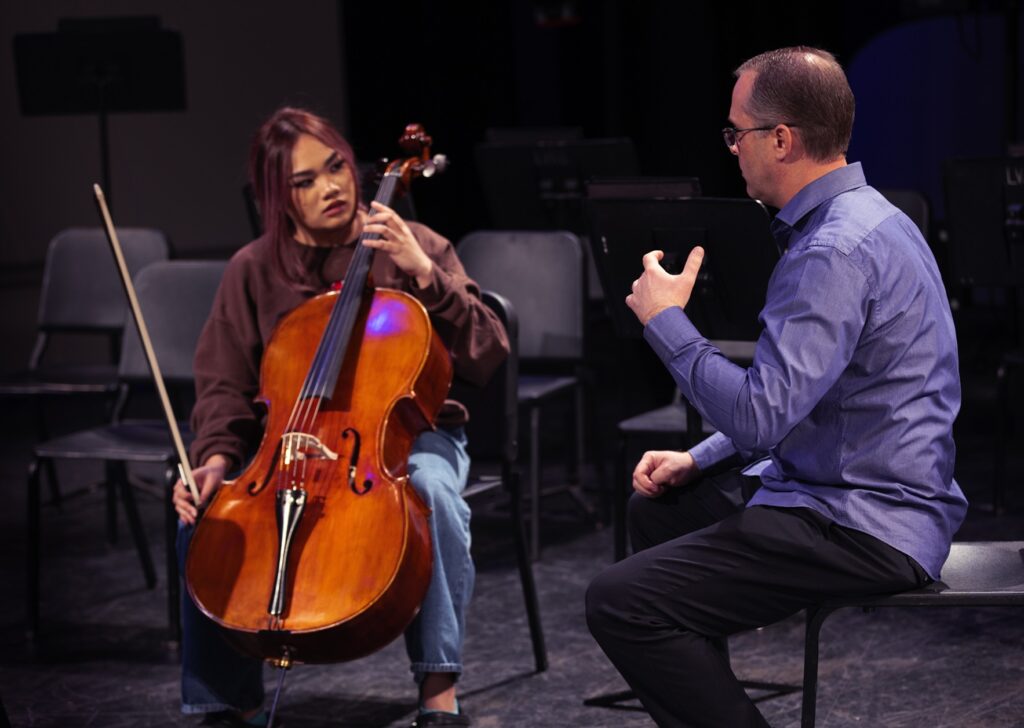How to Succeed as a Sole 6-12 Music Educator
If you are the middle school and high school band director, you can easily get overwhelmed, but with proper investment and planning, you can succeed.
You have been hired as the new high school band director — congratulations! It’s probably the beginning of summer, and you are about to start the process of building your marching band show and learning the ins and outs of football season at your school.
However, in addition to being the high school director, you are also the middle school director. The middle school stuff can wait until August, right? The answer is “no” … and, at the same time, “yes.” I have been a band director for 10 years in Alabama, and in seven of those years, I have been the sole band director for grades 6-12. I also work with a choir director who covers middle school and high school, too.
In my state, the majority of music programs are in this same situation; most are in rural or underfunded areas. As a result, there are a number of uphill battles that are immediately presented to you as a director. The main one being an underdeveloped program. Past directors, no matter how talented or hard-working, were usually in the job for a year or two at most, which means programs have to restart/rebuild every few years.
So, what can a sole director do? You must invest, plan, build and then invest again. If you go through these steps, you might be able to rest a little easier during that first year, and, most importantly, you will see the value of your hard work. Every student deserves the same musical and educational experience regardless of the number of directors, financial opportunities, program size or location.
Emotional Investment
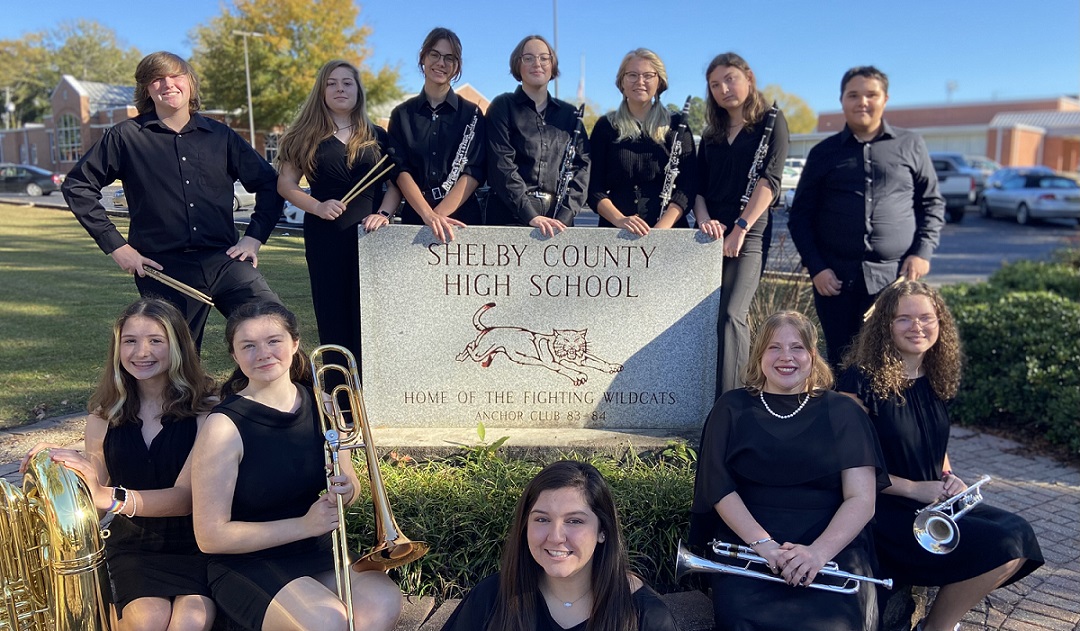 The first thing you must do as a new director is to learn about the community, students, stakeholders and the general dynamics of the school. That’s what I did when I accepted the job at Shelby County High School in 2018. I soon discovered that I was in a great situation because my community is very tightknit (most music educators in small or rural areas will experience the same thing).
The first thing you must do as a new director is to learn about the community, students, stakeholders and the general dynamics of the school. That’s what I did when I accepted the job at Shelby County High School in 2018. I soon discovered that I was in a great situation because my community is very tightknit (most music educators in small or rural areas will experience the same thing).
You might hear that too much community involvement is a bad thing, but that will only be the case if you allow it to be. If you go into the investment phase with the mindset that your program is the only thing that matters, you will be run out of town quickly. I was in charge of two schools with a total population of just under 1,000 students, and I knew that we would have lots of crossover with other programs, athletics and academics, which is wonderful! Your ability to work and collaborate with others will lead to a better program for your students.
My first few days on the job were critical. I set up meetings with my principals and band boosters, and I held a general meet-and-greet event where folks could get to know me and put a face with a name. These simple interactions gave me a better understanding of the community and the wants and needs of the program. My community had a rich tradition of band excellence, which they naturally wanted to continue, but what I heard most from students and parents was that they wanted newer things. Not necessarily new items, but new ideas — a freshness to the program.
Plan, Plan, Plan
After the initial investment phase, you then enter the planning phase. And let me be clear, planning never stops. When you plan for a school year for two schools with students at four to seven ability levels, you must always think about the next step and then have two or more backup plans. It’s challenging, but not impossible. Here are a few ideas I use when creating my plan for my program.
Music First — Always invest the majority of your planning into finding music that serves two purposes. The first is educational — the music should meet the needs of your program and your students. Secondly, the music must be engaging for your students and for you. I have selected music off a list of “essential” pieces, and they are usually the ones I dread teaching, which results in an underdeveloped plan and a poor performance. Choose music that you and your students will enjoy and that meets your educational goals.
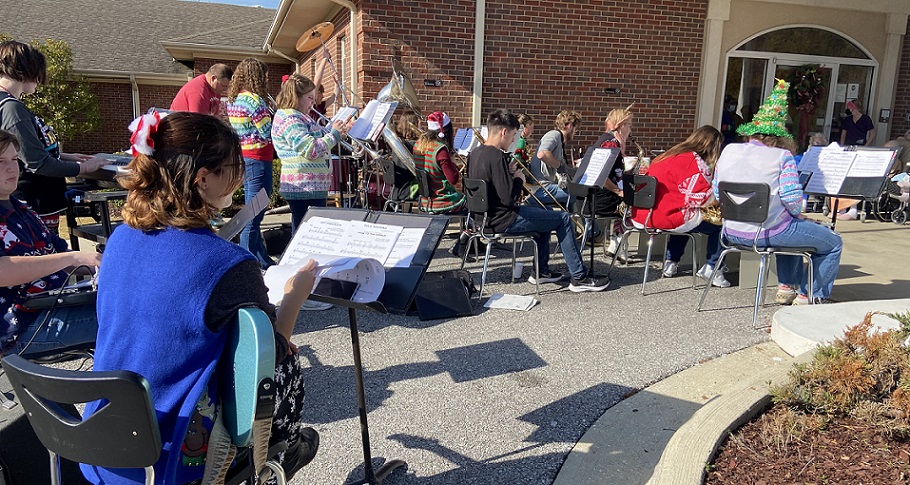 Perform Often — No matter the age of your students, they should be performing. The typical model of fall, holiday, performance assessment and spring concerts truly doesn’t meet students’ ability to perform. It also leads to performance anxiety. To eliminate this, I try to schedule at least one performance each month after students’ first year of instruction. This could be as simple as a chamber group performing at a nursing home. The more students perform, the better they become at performing, and it increases their music-reading skills. My high school students will perform 12 times in various ensembles from November to January, and only one of those times is a full ensemble concert. These include multiple jazz performances at nursing homes and community events; our marching band performing in the city Christmas parade; and our chamber ensembles performing at the Alabama Music Educators Association conference in January. With each performance, your program’s footprint and advocacy expand. Every school board member and our superintendent know me because our music students are so visible in the public, and they often attend our full concerts. And we all know that their presence at concerts leads to more opportunities and more experiences for our students.
Perform Often — No matter the age of your students, they should be performing. The typical model of fall, holiday, performance assessment and spring concerts truly doesn’t meet students’ ability to perform. It also leads to performance anxiety. To eliminate this, I try to schedule at least one performance each month after students’ first year of instruction. This could be as simple as a chamber group performing at a nursing home. The more students perform, the better they become at performing, and it increases their music-reading skills. My high school students will perform 12 times in various ensembles from November to January, and only one of those times is a full ensemble concert. These include multiple jazz performances at nursing homes and community events; our marching band performing in the city Christmas parade; and our chamber ensembles performing at the Alabama Music Educators Association conference in January. With each performance, your program’s footprint and advocacy expand. Every school board member and our superintendent know me because our music students are so visible in the public, and they often attend our full concerts. And we all know that their presence at concerts leads to more opportunities and more experiences for our students.
Trophies Do Not Matter — It will take some time for you and your students to accept this idea. The final group to understand this will be the parents. The outcome or success of a performance should not be gauged by awards or trophies. If your students have progressed in their learning from where they started, then you have won. In 2019, our last full year before the pandemic, the band won almost every competition and scored higher than some of the top programs in the state. For the 2021-2022 school year, our return to a normal marching band season was incredibly difficult. More than half the band members were first-year performers, and many had never performed in a full concert. We received lower scores than in the past, but students began to buy into the idea of improvement as the ultimate goal. As a result, students who fought through the adversity of the pandemic have a greater love and appreciation for band and music.
Build Your Program
I am a firm believer that in order for your program to thrive, everyone must speak the same language. You must develop a system from the top down. What you want the top of the pyramid to know must be taught at the bottom of the pyramid, or at the beginning of the process. My hometown is known for high school football, and the reason for its success is that the youth teams run the same plays as the high school. Kids grow up within the culture, using the same language as the high school football system. When they make it to the high school team, they already know the playbook. Of course, there are variations of complexity of plays as they progress, but the basis is the same.
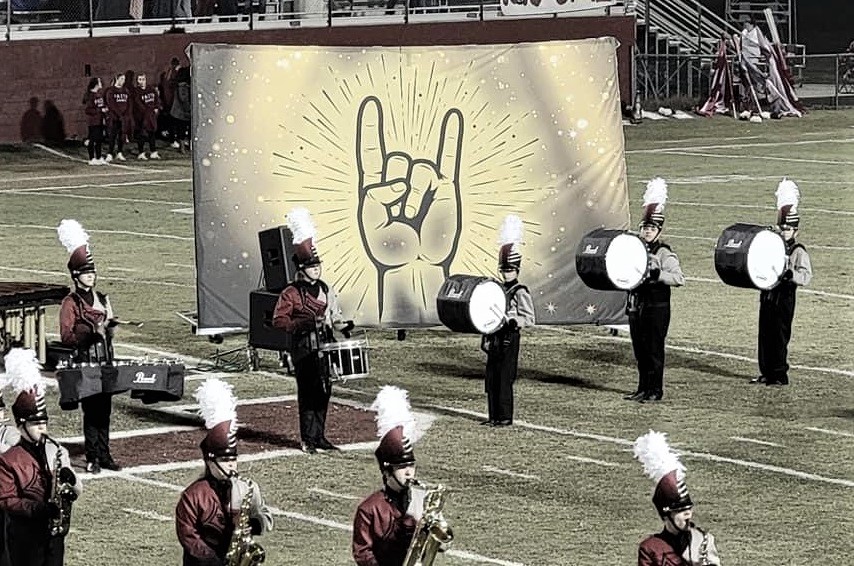
Call-Time System — When it comes to rehearsals and performances, I use a call-time system, where the call time is 15 minutes before the actual event. If call time is 3:30 p.m., then rehearsal begins at 3:45 p.m. This gives me and students leaders 15 minutes to do things such as begin sectional times, take attendance, make sure the facilities are ready for whatever activity we are about to do. We also use call time for travel. If we are departing at 6 p.m., then everyone is there no later than 5:45 p.m. It took a few years to get everyone on board, but now it is second nature to the students. It has allowed for less stress on times we are leaving campus or when we are performing, which leads to less performance anxiety. This is part of building your system.
Open-Door Policy — Everyone says that they have an open-door policy, but my door is literally open all the time. My students know that my office is their safe place. My schedule works out so that I have lunch period off, and our school is split into three lunch waves. During all three lunch waves, there are anywhere from five to 15 students in my office eating lunch. We rarely talk about band, although music theory topics have come up; instead, we talk about their history, math and English classes, and we talk about life. I tutor kids on assignments they didn’t quite understand. I also just sit back and observe how they interact with each other. We laugh, we cry and we eat. We become a family. While this has nothing to do with the notes on the page, it means more than any time of the day for the development of the system. With this stronger connection to each other, we are able to work later in the day on music but do it with greater human interaction.
Recruit All the Time — The other way to build your program is to recruit every day. I make sure students know who I am by being present throughout the year. I visit our three elementary feeder schools three to four times a year, and each time I bring something different but deliver the same message: Join the band! The first time I visited an elementary school, there were a few “hey, I know you” moments. By the time students choose an elective for 6th grade, I know some of their names.
Spread the Word About Your Program — I also regularly post on our band’s social media accounts (Instagram and Facebook), which is another way to expand the footprint of our program. All my posts are positive about student achievements, and I tag all local accounts. As a result, I often have people in town say that they know what’s going on with the band because of social media. I also pitch everything we do to our local reporters. Last year, the band program was in the newspaper and on our local TV stations numerous times, including an interview with me on our ABC affiliate (Teacher of Month Interview). All this has brought us positive momentum. Currently, 20% to 30% of all incoming 6th graders join the band. By the start of the next school year, we should have 15%-20% of the middle school enrolled in band, which will only lead to an increase in high school participation in the future.
Investment for the Future
I was always told to “never smile your first year,” which is the worst attitude to have. There is good in everything that we do. You must find a way to smile, or you will soon be looking for another job. In a small community, find joy in the little victories, and they will lead to bigger victories. With that being said, I do apply the adage, “never take no for an answer,” but I have tweaked it to “never accept no as the only answer.”
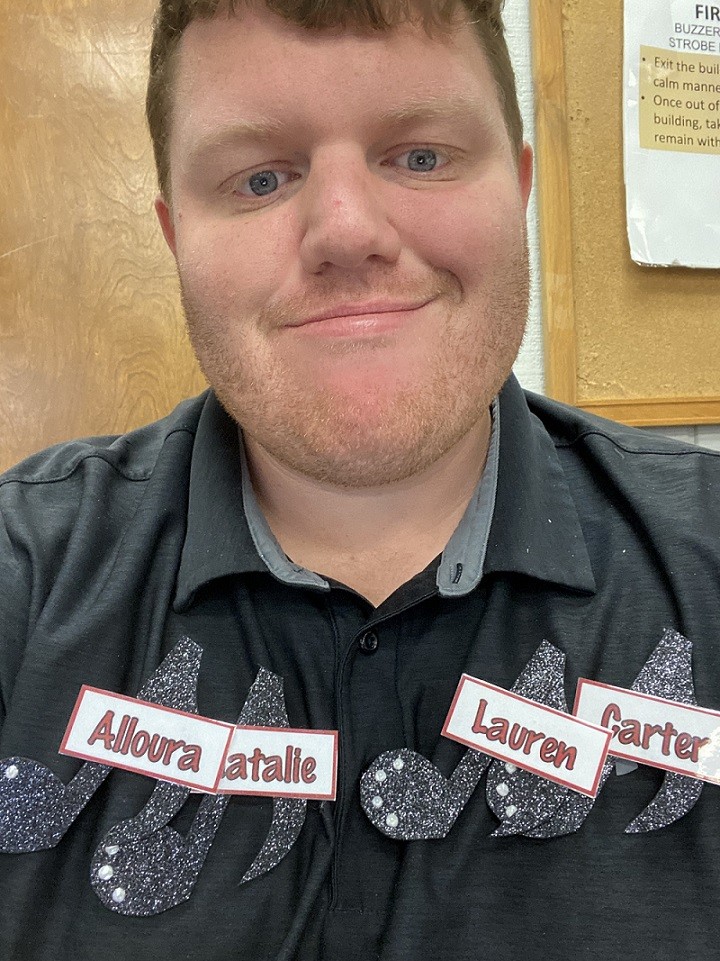 With every big decision I have taken to our administration, I always have a back-up plan. Your administrators are there to support you, not to fight with you, and if they are fighting against you, then you might need to look in the mirror. Your top priority is your program, and you must fight for it. But you must realize that you are just one program at your school. If your plan is rejected, don’t be discouraged. Have a back-up plan or be willing to work with administrators on a revised plan. Or, come back at a later date and say, “Remember when I wanted to do XYZ — what are your thoughts on it now?” You may be shocked, as I have been, at how administrators are more willing to approve, or at least discuss, the original plan. Team-building and collaboration are essential.
With every big decision I have taken to our administration, I always have a back-up plan. Your administrators are there to support you, not to fight with you, and if they are fighting against you, then you might need to look in the mirror. Your top priority is your program, and you must fight for it. But you must realize that you are just one program at your school. If your plan is rejected, don’t be discouraged. Have a back-up plan or be willing to work with administrators on a revised plan. Or, come back at a later date and say, “Remember when I wanted to do XYZ — what are your thoughts on it now?” You may be shocked, as I have been, at how administrators are more willing to approve, or at least discuss, the original plan. Team-building and collaboration are essential.
This past season at the Alabama Marching Championships, I spoke with another director who is in the same situation as me. She, however, has been the director at her schools for almost 15 years. We agreed that our jobs as the lone director is hard … really hard, but our conversation was more about the positives of it all.
As the sole director, you can shape your entire program, see students grow up, learn family members’ names and stories, and ultimately, you are more than a director/teacher. You are a part of the community!
Whenever I am struggling with hardships and the workload, I think about that conversation and know that I am not alone. We still have the best job in the world, and there are a lot of us out there teaching all grades all day. Let’s boost each other up and let our students flourish in a positive musical experience!










